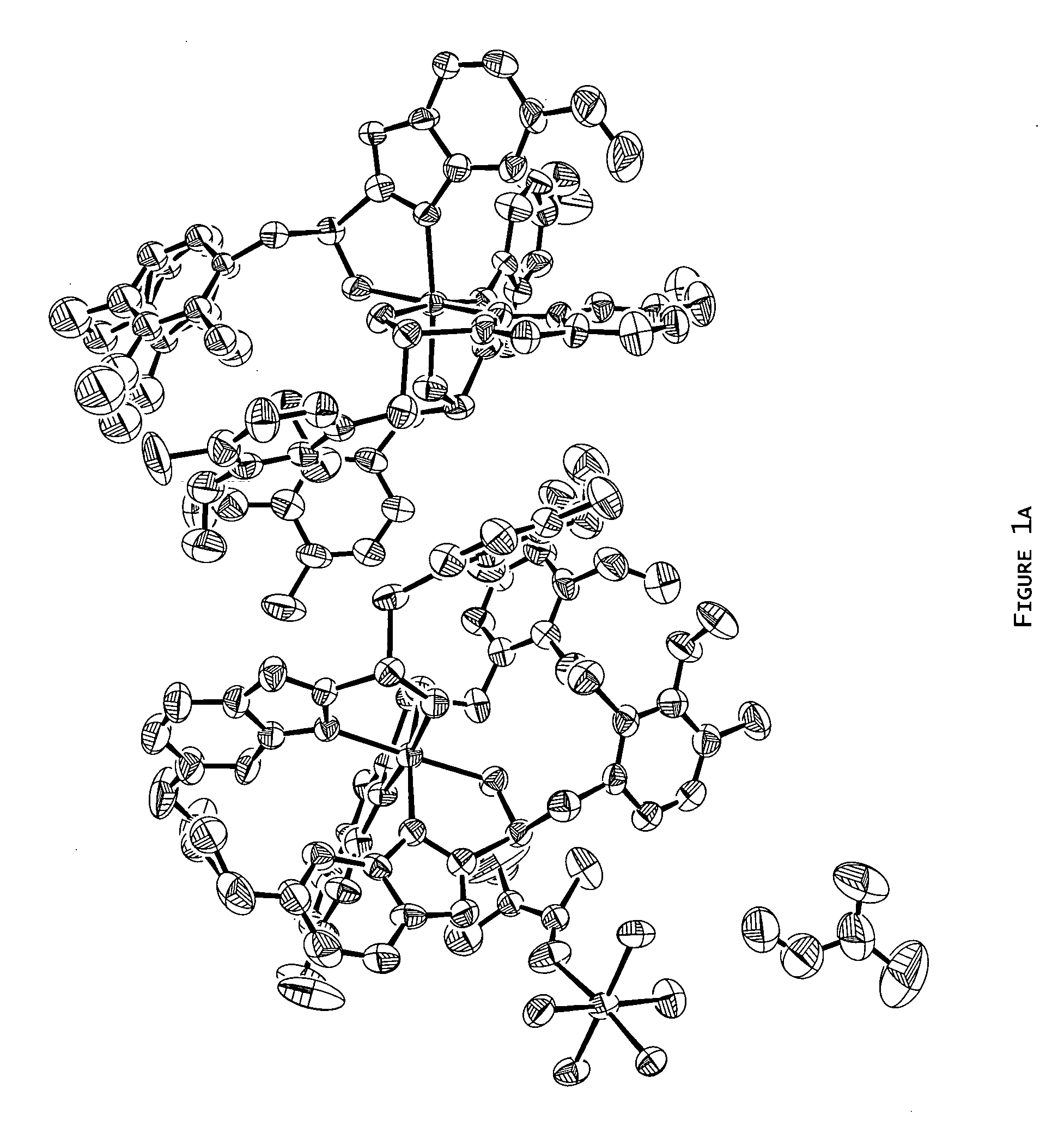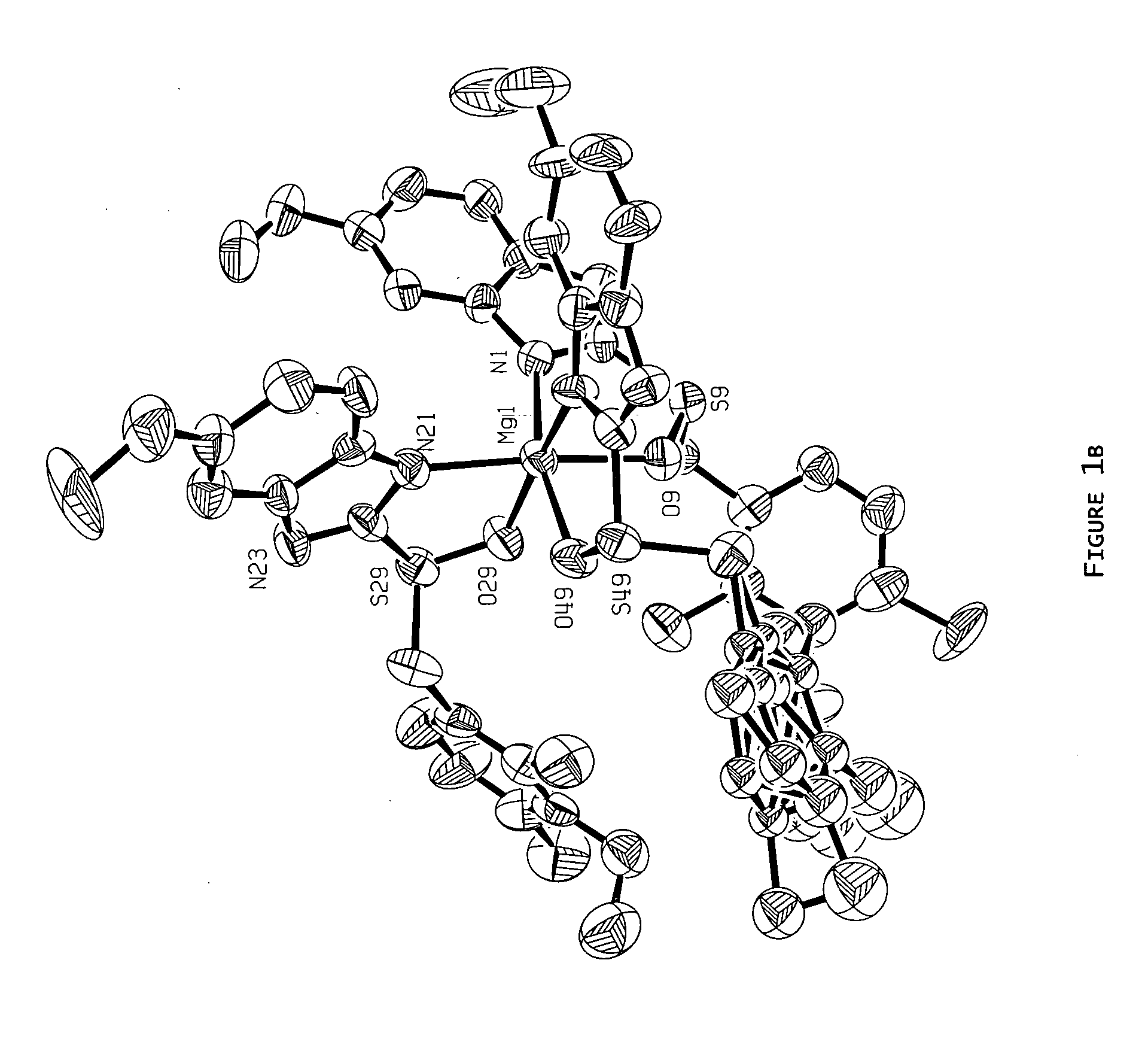Magnesium-S-omeprazole
- Summary
- Abstract
- Description
- Claims
- Application Information
AI Technical Summary
Benefits of technology
Problems solved by technology
Method used
Image
Examples
example 1
[0081] Preparation of Magnesium S-Omeprazole from S-Omeprazole and Methyl Magnesium Bromide via Grignard Reaction.
[0082] Methyl magnesium bromide (2.1 mL, 6.3 mmol, 3.0 M in diethyl ether) was added by syringe to a Schlenk flask (100 mL) under a nitrogen purge. 1,4-Dioxane (5 mL) was added to the flask in order to precipitate all magnesium salts, leaving dimethyl magnesium in solution. In a separate Schlenk flask (25 mL), S-omeprazole obtained from chiral high performance liquid chromatography (HPLC; 56.60 mg, 0.16 mmol; see Example 15 for conditions) was dissolved in toluene (10 mL). The dimethyl magnesium solution was removed from the Schlenk flask by syringe and gradually added to the S-omeprazole solution. The reaction solution appeared inactive; therefore, an aliquot of methyl magnesium bromide (1.8 mL, 5.4 mmol, 3.0 M in diethyl ether) was added to the flask by syringe and the resulting suspension stirred. A sufficient amount of ice cold water was added to the reaction mixtur...
example 2
[0083] Preparation of Magnesium S-Omeprazole from S-Omeprazole and Methyl Magnesium Bromide via a Grignard Reaction.
[0084] S-Omeprazole (103.06 mg, 0.30 nmol) was separated from rac-omeprazole free base by means of chiral HPLC (see Example 15) and dissolved in sufficient deoxygenated tetrahydrofuran in a clean, dry Schlenk flask (25 mL). Methyl magnesium bromide (2.0 mL, 6.0 mmol, 3.0 Min diethyl ether) was added slowly by syringe. Immediately, the evolution of a gas was observed and the reaction was allowed to stir under ambient conditions for two hours. A small quantity of ice cold water was added to the flask resulting in a vigorous exothermic reaction. Additional water was added and a yellow solid formed. The contents of the flask were transferred to a 1 L separatory funnel with water, diethyl ether, and tetrahydrofuran. An emulsion formed and concentrated ammonium hydroxide was added to the separatory funnel in an amount sufficient to dissipate the emulsion.
example 3
[0085] Preparation of Magnesium S-Omeprazole from S-Omeprazole and Magnesium Methoxide.
[0086] Magnesium metal (14.429 mg, 0.5937 mmol) was placed in a small, dry Schlenk flask with methanol (5 mL). The flask was fitted with a nitrogen purge and the solution warmed to 40° C. to dissolve the metal. S-Omeprazole, separated from rac-omeprazole free base by chiral HPLC (see Example 16; 0.09954 g, 0.2882 mmol), was dissolved in methanol (7 mL) and added to the Schlenk flask. The solution was stirred under nitrogen for 48 hours. Water (8 μL) was added to the Schlenk flask and stirred for 30 minutes to facilitate the precipitation of magnesium salts. The magnesium salts were removed by filtration through a Whatman #4 paper filter. Any remaining solids were removed from the pink supernatant solution by filtration through 0.45-μm polytetrafluoroethylene (PTFE). The solution was concentrated by rotary evaporation. Acetone (10 mL) was added and the solution placed under refrigeration for 2 day...
PUM
| Property | Measurement | Unit |
|---|---|---|
| Fraction | aaaaa | aaaaa |
| Composition | aaaaa | aaaaa |
| Acidity | aaaaa | aaaaa |
Abstract
Description
Claims
Application Information
 Login to View More
Login to View More - R&D
- Intellectual Property
- Life Sciences
- Materials
- Tech Scout
- Unparalleled Data Quality
- Higher Quality Content
- 60% Fewer Hallucinations
Browse by: Latest US Patents, China's latest patents, Technical Efficacy Thesaurus, Application Domain, Technology Topic, Popular Technical Reports.
© 2025 PatSnap. All rights reserved.Legal|Privacy policy|Modern Slavery Act Transparency Statement|Sitemap|About US| Contact US: help@patsnap.com



